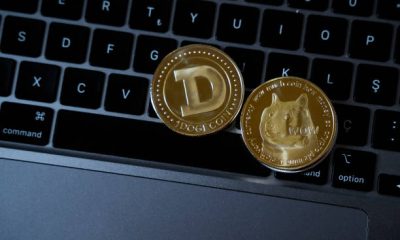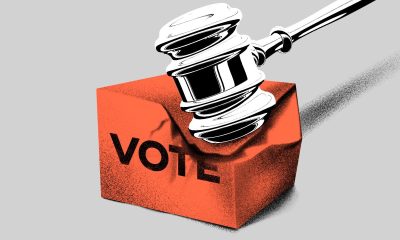Market
Tornado Cash Dev Pertsev Aims to Raise $1 Million

Alexey Pertsev, a developer of Tornado Cash, is actively seeking financial support to sustain his legal battle in the Netherlands.
On August 10, Pertsev publicly appealed for funds through a video on the social media platform X (formerly Twitter).
Tornado Cash Dev Wants to Raise $1 Million
Pertsev, who has been sentenced to five years in prison, is aiming to raise between $750,000 and $1 million to cover his legal expenses. A support account on X confirmed the appeal, highlighting the significant resources behind the government prosecution against him.
The campaign urges supporters to donate Ethereum via the decentralized fundraiser Juicebox. The campaign team also emphasizes that Pertsev is fighting for his freedom and the broader principles of privacy and open-source development.
“If you believe developers shouldn’t face jail time for their code, please consider donating ETH,” the Juicebox campaign stated.
Read more: Tornado Cash: Everything You Need To Know

Early responses from the crypto community are promising. The “Defend Alexey” fundraiser on Juicebox has already collected 15.35 Ethereum, worth over $40,000. Additionally, privacy researcher Ameen Soleimani has launched a limited edition NFT collection to support Pertsev’s legal defense.
These fundraising efforts build on previous support from the crypto community. Notably, Ethereum co-founder Vitalik Buterin had previously donated more than $100,000 to support Pertsev and his colleague Roman Storm, who is currently held in the US.
Privacy advocates and the blockchain community have closely scrutinized Pertsev’s case, worrying about the broader implications for developers if others misuse their code. Daniel Buchner, Head of Decentralized Identity at Block, has criticized the idea that developers should face criminal or civil liability for the misuse of their open-source software.
“That Alex’s code was primarily used for shitcoins is irrelevant, everyone who cares about justice and human freedom must fight the insane, authoritarian idea that people using open source software in a way the government doesn’t like makes the developer criminally/civilly liable,” Buchner stated.
Read more: Top 7 Privacy Coins in 2024
Meanwhile, regulators worldwide have increased scrutiny of privacy protocols over the past year. They argue that terrorist organizations and rogue states like North Korea exploit these technologies to conceal illicit digital assets.
As a result, the US government has initiated legal actions against several crypto privacy service providers, including the co-founders of Samourai Wallet, for alleged violations of local laws.
Disclaimer
In adherence to the Trust Project guidelines, BeInCrypto is committed to unbiased, transparent reporting. This news article aims to provide accurate, timely information. However, readers are advised to verify facts independently and consult with a professional before making any decisions based on this content. Please note that our Terms and Conditions, Privacy Policy, and Disclaimers have been updated.
Market
GRASS Jumps 30% in a Week, More Gains Ahead?

GRASS has surged nearly 30% over the past week, with its market cap climbing back to $415 million and its price breaking above $1.70 for the first time since March 10.
This strong performance has been backed by bullish technical signals, including a consistently positive BBTrend and a rising ADX. However, with momentum indicators beginning to cool slightly, the next few days will be key in determining whether GRASS continues its rally or enters a period of consolidation.
GRASS BBTrend Remains Strong, But Is Slightly Declining
GRASS’s BBTrend is currently at 11.28, marking the fourth consecutive day in positive territory, after peaking at 14.85 two days ago.
The BBTrend (Bollinger Band Trend) indicator measures the strength of price trends by analyzing how far the price moves away from its moving average within Bollinger Bands.
Generally, values above zero indicate an uptrend, while values below zero suggest a downtrend. The higher the positive reading, the stronger the bullish momentum, whereas deep negative values reflect strong selling pressure.

With GRASS maintaining a BBTrend of 11.28, the token is still in an active uptrend, although slightly cooler than its recent peak.
Sustained positive BBTrend readings typically signal that buyers remain in control and that upward momentum could continue.
However, the slight pullback from 14.85 might suggest that momentum is starting to ease. If the BBTrend begins to decline further, it could be an early sign of consolidation or a possible reversal.
For now, GRASS appears to be holding onto bullish momentum, but traders should monitor any shifts in trend strength closely.
GRASS ADX Shows The Uptrend Is Getting Stronger
GRASS is currently in an uptrend, with its Average Directional Index (ADX) rising to 30.31 from 26.49 just a day ago, indicating a strengthening trend momentum.
The ADX is a widely used technical indicator that measures the strength of a trend, regardless of its direction, on a scale from 0 to 100.
Values below 20 suggest a weak or non-existent trend, while readings above 25 indicate that a trend is gaining traction.
When the ADX moves above 30, it typically signals that the trend is becoming well-established and may continue in the same direction.

With GRASS’s ADX now above the 30 threshold, the current uptrend appears to be gaining strength. This suggests that bullish momentum is firming up and that price action may continue favoring the upside in the near term.
As long as the ADX remains elevated or continues climbing, the trend is likely to sustain, attracting more interest from momentum traders.
However, if the ADX begins to plateau or reverse, it could signal a potential slowdown or consolidation phase ahead.
GRASS Could Form A New Golden Cross Soon
GRASS’s Exponential Moving Average (EMA) lines are showing signs of a potential golden cross, a bullish signal that occurs when a short-term EMA crosses above a long-term one.
If this crossover confirms, it could mark the beginning of a sustained uptrend. GRASS is likely to test the immediate resistance at $1.85 as some artificial intelligence coins start to recover good momentum.
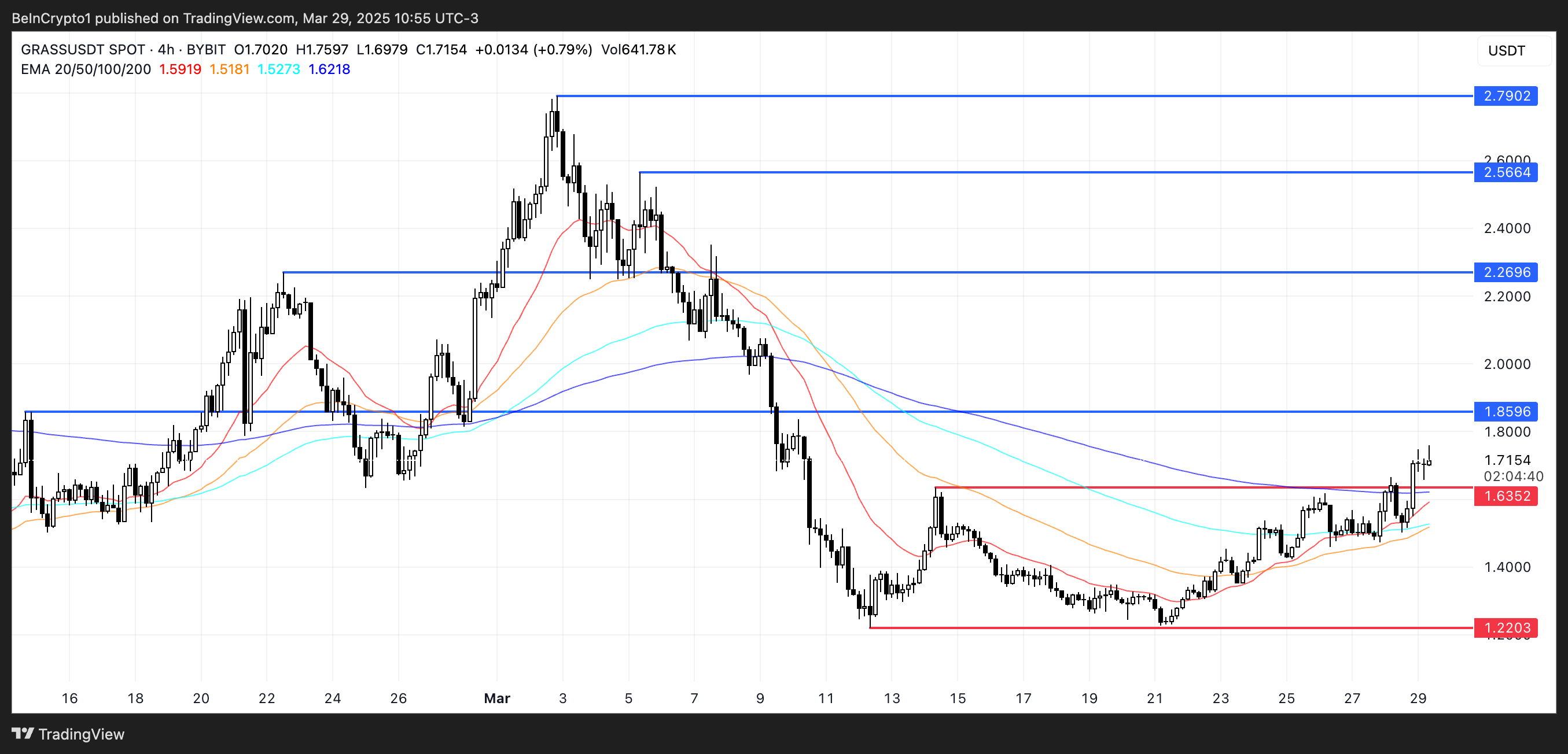
Should bullish momentum from the past week persist, the token may push even higher toward $2.26 and eventually $2.56 or $2.79, possibly solidifying its position as one of the best-performing altcoins in the market.
However, if the trend fails to hold and sentiment shifts bearish, GRASS could pull back to retest the support at $1.63.
A break below this level might open the door to a deeper correction, potentially driving the price down to $1.22.
Disclaimer
In line with the Trust Project guidelines, this price analysis article is for informational purposes only and should not be considered financial or investment advice. BeInCrypto is committed to accurate, unbiased reporting, but market conditions are subject to change without notice. Always conduct your own research and consult with a professional before making any financial decisions. Please note that our Terms and Conditions, Privacy Policy, and Disclaimers have been updated.
Market
Vitalik Buterin Promotes Ethereum Layer 2 Roadmap


Ethereum co-founder Vitalik Buterin has introduced a new roadmap aimed at strengthening the security and finality of Layer 2 (L2) solutions.
His proposal introduces a flexible, multi-proof system designed to support Ethereum’s scalability while preserving its core principles of decentralization and trust minimization.
Ethereum’s New Layer 2 Roadmap
At the heart of Buterin’s technical framework is a “2-of-3” model. This system uses three different proof types—optimistic, zero-knowledge (ZK), and trusted execution environment (TEE) provers.
A transaction is finalized when any two of these agree, significantly reducing the risk tied to relying on a single-proof method. The model offers a pragmatic balance between speed, robustness, and decentralization.
Buterin emphasized the importance of diversification, especially as zero-knowledge systems mature. He warned that shared code among ZK rollups could cause bugs to propagate across implementations, raising systemic risk.
“This means that the finality of rollups can be as fast as zk proving (~<1hr for now) while protecting the system from soundness bugs in the zk system,” Wei Dai, a research partner at 1kxnetwork, explained.
Meanwhile, Buterin’s roadmap also lays out the requirements for what he calls “Stage 2 rollups.” These next-generation rollups would deliver near-instant confirmations, high finality, and strong resistance to failures—even in semi-trusted environments.
Importantly, they would still adhere to Ethereum’s 30-day upgrade delay, a rule that safeguards the network’s stability during transitions.
Buterin Makes Case for Open-Source Funding
Beyond scalability, Buterin is also advocating a cultural shift in how the crypto community approaches development funding.
In a separate blog post, he suggested shifting the focus from “public goods funding” to “open-source funding.”
His concern is that the phrase “public goods” has become politically and socially loaded, often used in ways that prioritize perception over impact.
“A big part of the reason why the term ‘public good’ is vulnerable to social gaming is precisely the fact that the definition of ‘public good’ is stretched so easily,” Buterin argued
He noted that public goods funding is vulnerable to social desirability bias. This often favors those who can navigate community politics over those who deliver meaningful value.
In contrast, open-source funding emphasizes transparency, collaboration, and the building of tools that genuinely benefit the broader ecosystem.
Buterin believes that the goal should not be to fund any open-source project indiscriminately but to support those that create maximum value for humanity.
This stance aligns with his broader vision of a sustainable, community-driven blockchain infrastructure.
Together, Buterin’s proposals could redefine both the technical direction of Ethereum’s scalability efforts and the philosophical foundations of its funding strategies—reinforcing the network’s long-term commitment to decentralization, security, and public benefit.
Disclaimer
In adherence to the Trust Project guidelines, BeInCrypto is committed to unbiased, transparent reporting. This news article aims to provide accurate, timely information. However, readers are advised to verify facts independently and consult with a professional before making any decisions based on this content. Please note that our Terms and Conditions, Privacy Policy, and Disclaimers have been updated.
Market
US Senators Question Trump’s Involvement in USD1 Stablecoin
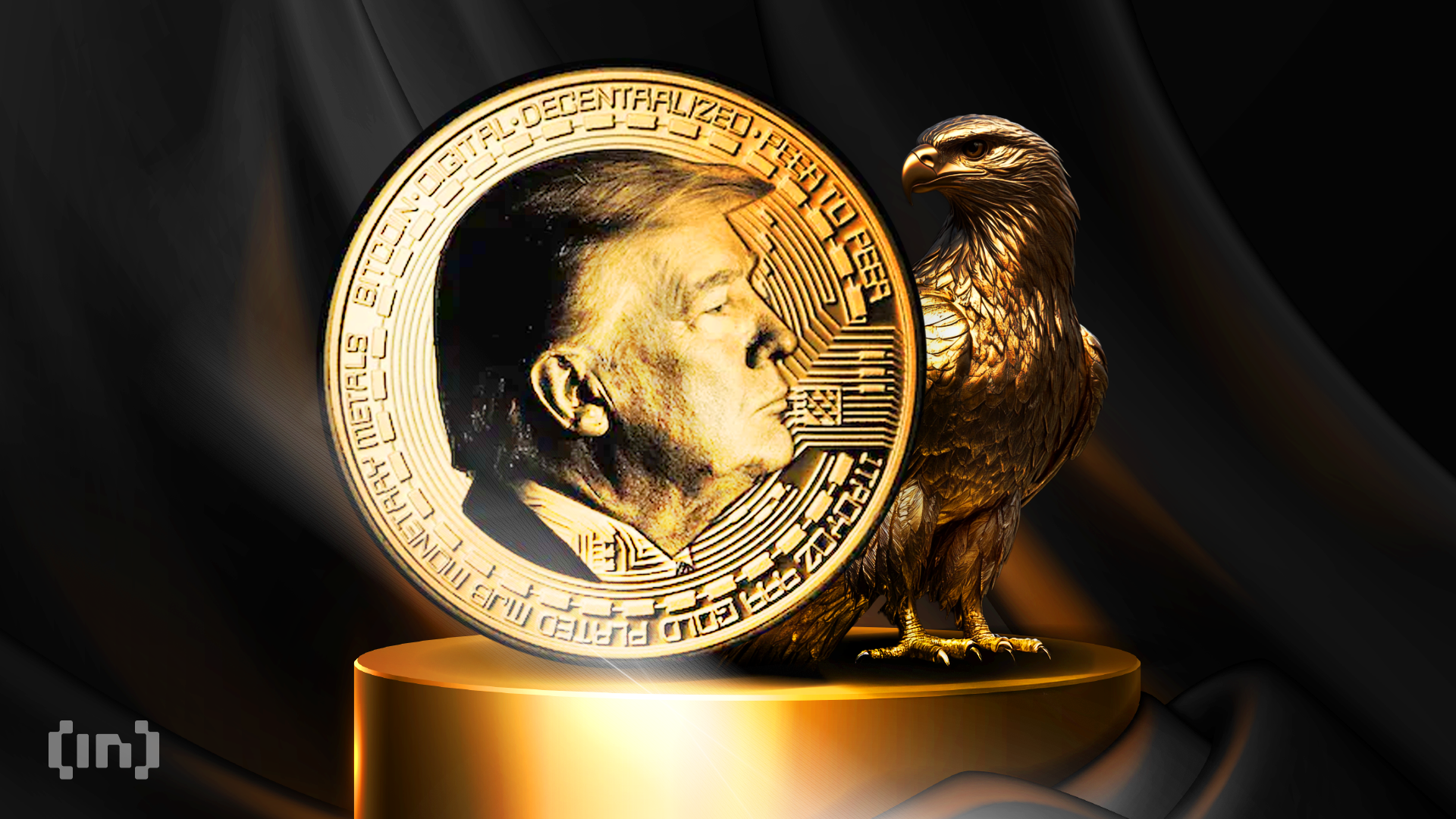

A coalition of US Senators is raising serious concerns about a potential conflict of interest involving President Donald Trump and an upcoming stablecoin project called USD1.
The digital asset, backed by World Liberty Financial (WLF), has drawn scrutiny due to Trump’s reported ties to the company behind it.
Warren-Led Group Flags Risks of Presidential Involvement in USD1 Approval
On March 28, a group of lawmakers led by Senator Elizabeth Warren sent a letter to the Federal Reserve and the Office of the Comptroller of the Currency (OCC).
They asked both agencies to clarify how they plan to uphold regulatory integrity regarding the impending USD1 stablecoin.
The request comes as Congress considers the GENIUS Act, a bill that would grant the Fed and OCC broad authority over stablecoin regulation.
“The President of the United States could sign legislation that would facilitate his own product launch and then retain authority to regulate his own financial company,” they noted.
The Senators warned that allowing a sitting president to profit from a digital currency regulated by federal agencies under his influence poses a major threat to financial stability. They argue that such a situation is without precedent and could erode public trust in the regulatory process.
“The launch of a stablecoin directly tied to a sitting President who stands to benefit financially from the stablecoin’s success presents unprecedented risks to our financial system,” They argued.
The letter outlines scenarios where Trump could directly or indirectly influence decisions involving USD1.
For instance, the President could interfere with the OCC’s evaluation of the stablecoin’s application or discourage enforcement actions against WLF.
They also suggested that Trump could pressure the Federal Reserve to provide emergency financial support for USD1 during market volatility—support that may not extend to competing stablecoins.
“[Trump] could also attempt to direct the Fed to establish a master account at the central bank for WLF. He could intervene to deny such assistance to USD1’s competitors,” the lawmakers stressed.
In addition, the Senators noted that the GENIUS Act contains no conflict-of-interest provisions that would prevent Trump from using his office to benefit financially from the stablecoin’s success.
This absence of guardrails, they say, opens the door to regulatory favoritism and economic manipulation.
Considering this, the lawmakers demanded clarification on how the Fed and OCC would handle key issues. These include the approval process for USD1, the potential creation of liquidity support during crises, and WLF’s oversight of potentially unsafe business practices.
The agencies must submit their responses by April 11, 2025. The letter was signed by Senators Elizabeth Warren, Ron Wyden, Chris Van Hollen, Jack Reed, and Cory Booker.
Disclaimer
In adherence to the Trust Project guidelines, BeInCrypto is committed to unbiased, transparent reporting. This news article aims to provide accurate, timely information. However, readers are advised to verify facts independently and consult with a professional before making any decisions based on this content. Please note that our Terms and Conditions, Privacy Policy, and Disclaimers have been updated.
-

 Market22 hours ago
Market22 hours agoCoinbase Users Lost $46 Million to Crypto Scams in March
-

 Altcoin22 hours ago
Altcoin22 hours agoPiDaoSwap, Trump Media, & Grayscale
-

 Regulation22 hours ago
Regulation22 hours agoUS SEC Drops Charges Against Hawk Tuah Girl Hailey Welch
-

 Ethereum21 hours ago
Ethereum21 hours agoEthereum Price Hits 300-Week MA For The Second Time Ever, Here’s What Happened In 2022
-
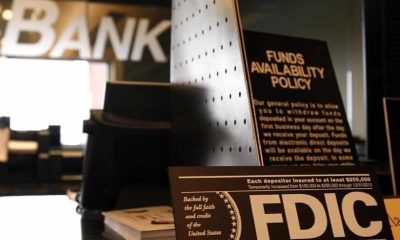
 Regulation24 hours ago
Regulation24 hours agoFDIC Revises Crypto Guidelines Allowing Banks To Enter Digital Assets
-
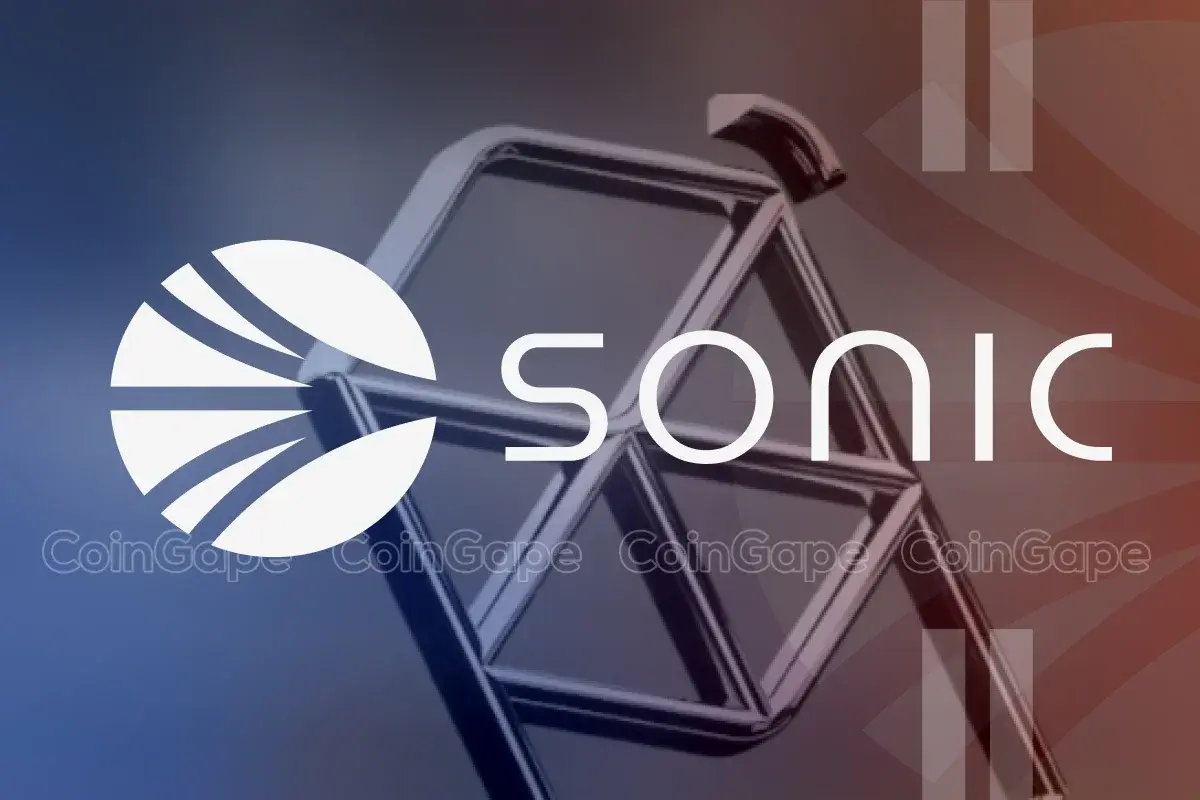
 Regulation23 hours ago
Regulation23 hours agoSonic Labs To Abandon Plans For Algorithmic USD Stablecoin, Here’s Why
-

 Market19 hours ago
Market19 hours agoWhy Did MUBARAK Drop 40% Despite Binance Listing?
-

 Altcoin24 hours ago
Altcoin24 hours agoShiba Inu Price Set To Repeat History? Falling Wedge Pattern Shows A Rally






